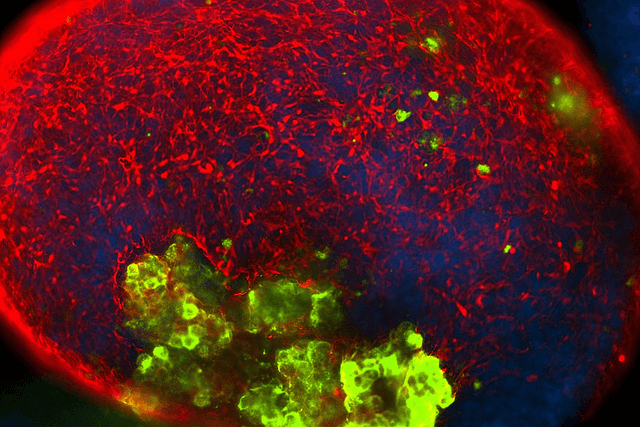Stem cells are undifferentiated cells that hold the potential to differentiate into any type of cell. They offer a wide variety of uses in medicine from curing illnesses such as cardiovascular disease, to repairing old joints/ligaments. However, the problem with stem cells and the reason why they aren’t more popular in clinical practices is their method of conception–the current methods of creating pluripotent stem cells are neither efficient nor practical. A new method of creating stem cells, originating from the Lutolf lab at the LCSB, holds promise for large-scale creation of pluripotent stem cells available for medicinal use.
There have been many attempts to develop a method of large-scale production of stem cells, but even the most successful methods do not yield results that are efficient and practical. One major issue with existing techniques is the use of two-dimensional culture systems when working with stem cells. The Lutolf Lab discovered that when normal cells were subject to a three-dimensional environment, compared to the two-dimensional environment, the normal cells would convert to stem cells at varying rates. Lutolf describes their process of discovery stating: “We try to simulate the three-dimensional environment of a living tissue and see how it would influence stem cell behavior… but soon we were surprised to see that cell reprogramming is also influenced by the surrounding microenvironment.”
This three-dimensional environment that the normal cells were subject to consisted of a gel containing normal growth nutrients. As the density and stiffness of the gel’s consistency changed, the gel exerts different forces on the cell, essentially “squeezing” them into stem cells. The exact biological mechanism of this conversion into a stem cell is not known, but scientists hypothesize that the three-dimensional structure of the gel provides mechanical signals that tell the cell to convert into a stem cell.
Image Source: Scientifica
“Each cell type may have a ‘sweet spot’ of physical and chemical factors that offer the most efficient transformation,” says Lutolf. “Once you find it, it is a matter of resources and time to create stem cells on a larger scale.”
Essentially Lutolf’s discovery can be applied to a large number of cells to produce stem cells, allowing for the possibility of creating these stem cells on an industrial-scale. Although a large-scale production of these stem cells is not yet achievable, Lutolf’s discovery not only leads to the possibilty of industrial production, but also furthers our knowledge of cell biology.
Feature Image Source: Stem Cell Week 2012 by UCI UC Irvine










